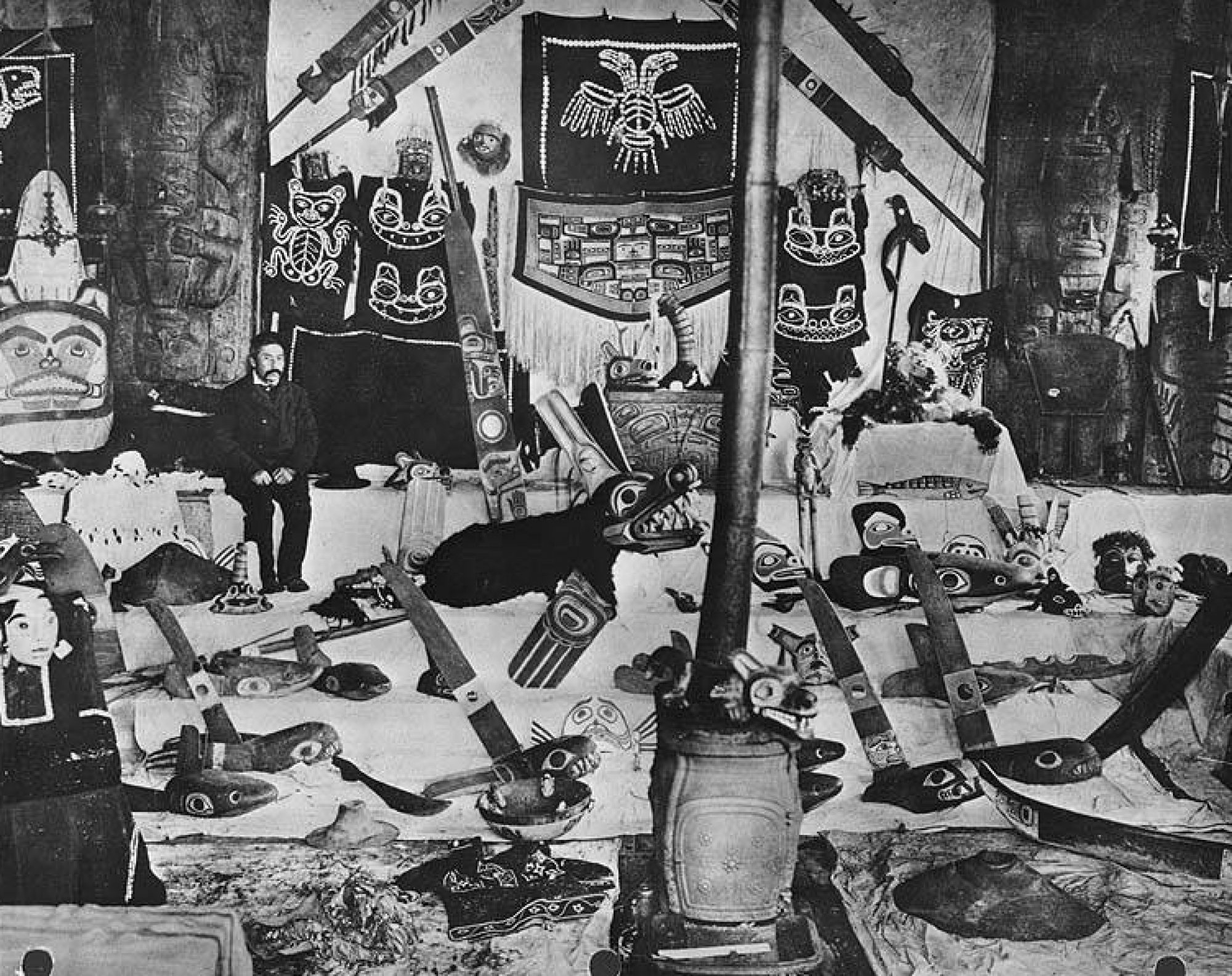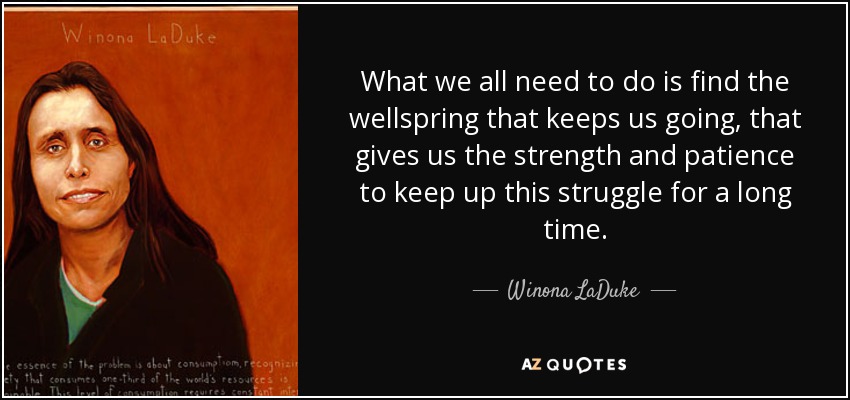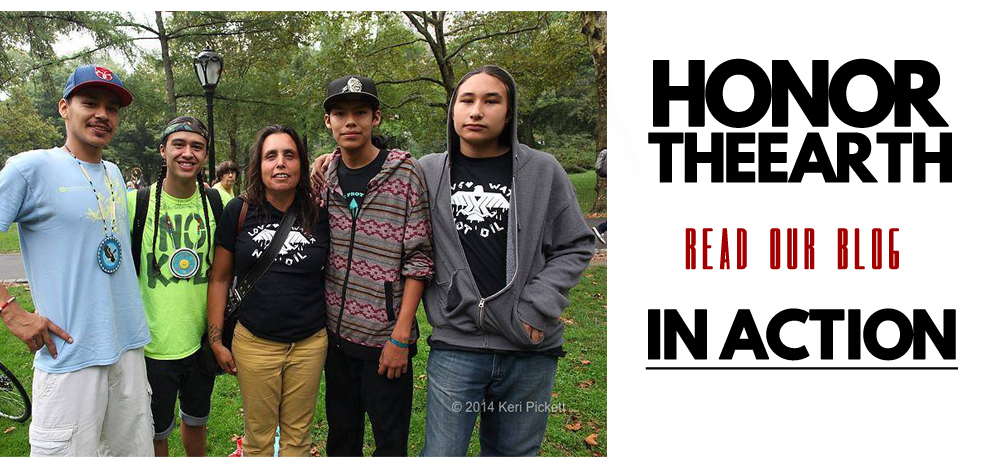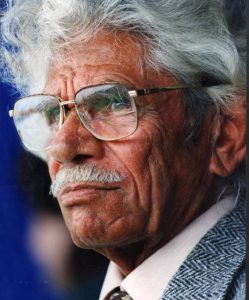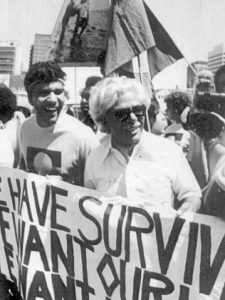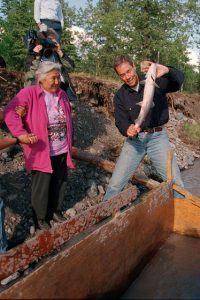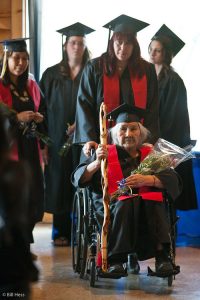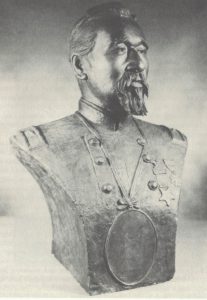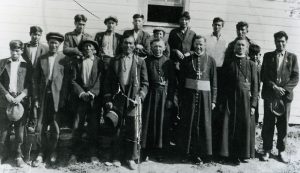Biographical Timeline | Leadership Qualities | Colonial Gender Violence | References
Brave
Leanne Simpson has created a wide range of literature and research addressing numerous amounts of issues within Indian country. Her discussions touch on issues that are often overlooked or internalized within Indian country. She pushes the envelope and shows true fearlessness by addressing issues that are further perpetuated within the community by the community. For instance, Simpson addresses the damaging effects of heteropatriarchy within Indigenous communities by “queering resurgence”. Leanne has created dialogue that provides a voice for Native women and two-spirit/queer Indigenous folks. In Queering Resurgence: Taking on Heteropatriarchy in Indigenous Nation Building, she addresses and dissects the the topic of involving more Native women in nation-building. Simpson explains that hearing the statement “we need more women involved in nation-building” sounds like an effort to improve the community on the surface, but this statement invalidates the immense amount of work and leadership roles that Indigenous women have been involved in for centuries. Leanne fiercely addresses issues that other Indigenous leaders do not prioritize or dissect. Many Indigenous leaders focus on the battle with dismantling and decolonizing the damage solely caused by the colonizer but fail to address the toxicity that exists within these communities that are further perpetuated by community members. Leanne bravely critiques the patriarchal tendencies engrained into Native communities in efforts to further decolonize and build relations. She provides a voice for community members that are marginalized within their own communities. In many cases there are situations where colonial patriarchy and community power dynamics can be disguised as traditional and cultural practices. Simpson provides examples such as, the perpetuation of colonial gender roles, pressuring women to wear certain articles of clothing in ceremonies, the exclusion of LGBTQ2 individuals from communities and ceremony, the dominance of male-centered narratives regarding the Indigenous experience, and the lack of recognition for women and LGBTQ2’s voices, experiences, contributions and leadership. Leanne Simpson shows true bravery by fighting for the interrogation of heteropatriarchy to become a part of Native communities decolonizing project. Her speech is radical and defies some extreme traditionalist’s beliefs and practices and forces communities to acknowledge their lack of inclusivity, patriarchal, and heteronormative tendencies that are normalized and engrained into community practices and protocols.

Visionary
Leanne Simpson throughout her life has continued to maintain focus on her vision of reforming the social issues of First Nations. She has strategically put her efforts in areas she deems will result in the greatest aid to her cause. This includes participating in the Idle No More movement and attempting to help gender-based violence and protect indigenous homelands by revisiting Canada’s Indian Act. Simpson also helps to turn her ambitions into reality through other means that may seem unorthodox relative to physically protesting/reforming. Simpson holds a PhD from the University of Manitoba and has written numerous novels (Islands of Decolonial Love, Dancing on Our Turtle’s Back, The Gift is in the Making, etc.) that educate the common reader on Indian traditions, customs, and oppression. The philosophy she attempts to spread is contrary to that of “extractivism”, which is the removal of Earth’s natural resources, assimilation of Natives, the removal of Indigenous ideals, and cultural appropriation. Through her protests and novels she attempts a resurgence in Indigenous ideology, intelligence, and community.

Creative
Leanne Simpson is a renowned Michi Saagiig Nishnaabeg artist, musician, poet and writer, who has been widely recognized as one of the most compelling Indigenous voices of her generation. Her work intersects between story and song, bringing audiences into a rich and layered world of sound, light, and sovereign creativity. Her latest album, f(l)ight, was released in 2016. f(l)ight is a collection of story-songs that effortlessly interweaves Simpson’s complex poetics and stories of the land, spirit, and body. Simpson’s work breaks open the intersections between politics, story and song. Leanne Simpson creates work that is a form of activism and resistance, addressing issues such as discrimination within her community. She created a music video for her song-poem “Leaks” from the album Islands of Decolonial Love. The video is shares the story of a young Anishinaabekwe experiencing racism for the first time, the poem is the voice of the mother realizing that she cannot protect her daughter from such injustices and acts of hate, but she can influence her in healing from these experiences. The video shows visuals of Leanne with her daughter on the land of the Michi Saagiig Nishnaabeg. The film is about living as an Anishinaabekwe, displaying the powerful connection to the land and the importance of passing that knowledge down to future generations. She states in the poem, “you are not a vessel for white settler shame”, teaching her daughter to take pride in her Indigenous identity and the importance of decolonizing her self-image. The poem and visuals are a notion of resistance, teaching her daughter to find healing through her land relations and cultural practices.
